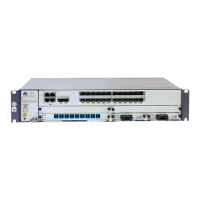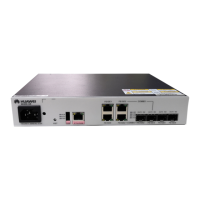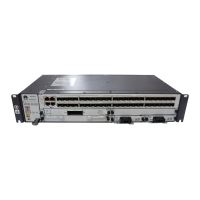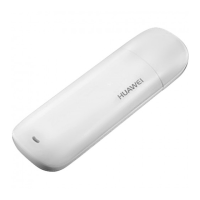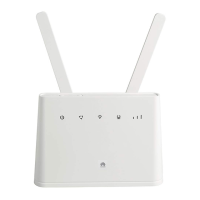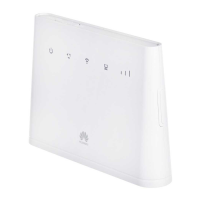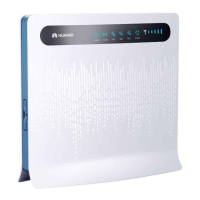Precautions
Because the transmit optical power of the OTDR meter is much higher than the
damaged optical power threshold at the receive end, the optical ber must be
removed from the optical module when the OTDR meter is used to test the optical
path quality.
Currently, the Ethernet port rate is increasing. Since the 50G optical module link
uses the PAM4 encoding technology, there are higher requirements on the optical
ber and cable quality and the link is more sensitive to multipath reection
interference of signals. If the ber link connector, ber section, or ber splicing
surface is dirty, optical signals are
reected back and forth on the ber link,
causing interference due to co-channel noise on the receive side. As a result, the
optical link is unstable or intermittently disconnected.
According to the national standard (GBT50312-2016), the loss of the optical ber
link connector must meet the requirements described in Table 4-10.
Table 4-10 Maximum attenuation of the optical ber connector
Type
Maximum attenuation of an optical ber
connector (dB)
Fiber splicing connector 0.3
Optical mechanical connector 0.3
Optical connector 0.75
Fiber cores are connected through connectors, such as the ODF, optical attenuator, and
ange, in splicing and mechanical modes.
Table 4-11 describes requirements for the reection of the optical ber connector
when Ethernet ports (such as 50G) use PAM4 encoding to double the rate. More
connectors bring lower requirements for the
reection.
Table 4-11 Maximum reection of connectors
Number of
Optical Fiber
Connectors
Maximum Reection of Each Connector (dB)
50GBASE-FR 50GBASE-LR 50GBASE-ER
1 -25 -22 -19
2 -31 -29 -27
4 -35 -33 -32
HUAWEI NetEngine 8000 F
Hardware Guide 4 Hardware Installation and Parts Replacement
Issue 05 (2023-03-31) Copyright © Huawei Technologies Co., Ltd. 392

